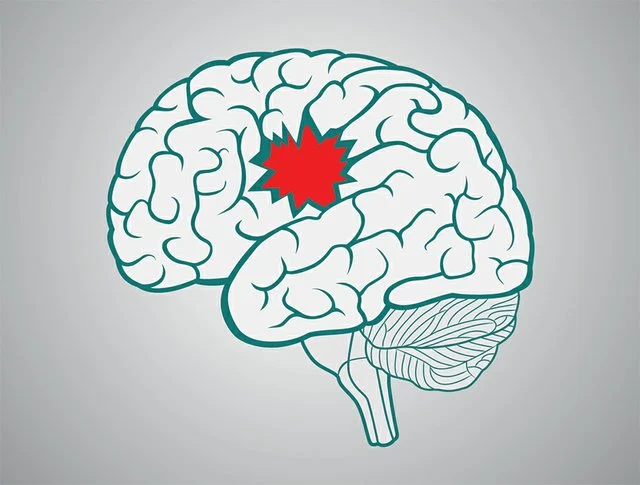
Erectile dysfunction affects over 30 million men throughout the United States, and about 150 million men worldwide. The overall trend shows an increase in the prevalence of this condition. The potential increase in this condition presents underlying problems with men’s health. While this condition may not appear to have an impact, it affects men’s lives daily, impacting their relationships and self-image. However, while conventional treatments focus on managing the condition, stem cell therapy has shown some significant results in treating it more effectively. Let’s discuss the condition first, before jumping into how stem cells can help.
What is Erectile Dysfunction?
When a man can’t maintain an erection firm enough for sex, it’s condition known as as erectile dysfunction. It is an impaired, abnormal function of the penis, the external male sex organ that contains the urethral chambers and erectile tissues used for ejaculation and sex. Those who have erectile dysfunction often experience it in chronic stages, as it can last for years or a person’s entire lifetime. People with erectile dysfunction often experience symptoms such as:
- Trouble getting an erection
- Issues keeping an erection
- An overall reduced sexual desire is part of or caused by issues with their erection.
Due to this abnormal condition’s nature, erectile dysfunction can play a contributing part in relationship problems and cause issues with self-confidence and stress. This persistent inability to perform sexually was originally believed to be caused by psychological problems. Still, advances to both diagnosis and treatment have helped urologists and primary care physicians understand that erectile dysfunction can also occur as physical symptoms for other health conditions. Erectile dysfunction when it occurs consistently, causing a slower sexual response is when this condition should be paid attention to and looked at by a urologist to determine the cause.
What Causes Erectile Dysfunction?
To fully understand why erectile dysfunction occurs, it’s essential to know what causes an erection. The penis is composed of erectile tissues arranged through three columns. These columns include the corpora cavernosa, which makes up the two lateral columns that make up the penis’s base, and the third column, the corpus spongiosum, containing the urethra. Attached to the pubic bone, the penis also contains the glans, the urethral orifice, and if uncircumcised, the foreskin.
When these organs function properly, the body creates hyperemia of the genitals. Hyperemia is flushing excess blood through the vessels to supply that blood to organs and other parts of the body. Throughout the penis, the corpora cavernosa chambers fill up due to sexual excitement and stimulation, causing an erection. Through a series of muscle contractions, the orgasm will cause the ejaculation of seminal fluid, which will lead the penis to return to a flaccid position.
Although this process sounds simplistic, male sexual arousal is a complex process that involves the brain, hormones, nerves, muscles, and blood vessels to function properly. For someone with erectile dysfunction, any one of these factors may contribute to erectile dysfunction, and combinations of these factors can play a significant part in the condition. For instance, performance anxiety can play a highly contributing factor in erectile dysfunction due to its compounds and hinders sexual response. This psychological condition can worsen and affect one’s relationships and sexual performance over time. However, for many men, this isn’t always the case.
Some of the most common health conditions that cause erectile function include:
Age
Erectile dysfunction often occurs as men age and the percentage of men that experience some form of ED goes up over time. Age plays an important factor in the development of ED but isn’t a sole factor, as age also correlates with other health problems.
Obesity
Being overweight and combining a high sedentary lifestyle can cause the body to turn testosterone to estrogen, causing erectile dysfunction. However, this condition can be reversed with diet and exercise.
Heart Health
Due to the connection between the heart, the blood vessels, and the male sex organs, health conditions such as high blood pressure, high cholesterol, and heart disease can have an impact on sexual performance, causing erectile dysfunction. When the heart has issues pumping blood throughout the body due to clogged arteries and blood pressure, it can inadvertently cause difficulties with maintaining an erection.
Diabetes
The relationships between blood glucose, insulin resistance, and erectile dysfunction have been connected due to the relationship between the body’s ability to metabolize glucose into energy, removing blood glucose from the system through the pancreas. Managing diabetes can help improve symptoms of erectile dysfunction.
Smoking
Nicotine causes a decrease in blood flow throughout the entire body and is often connected to erectile dysfunction. Quitting smoking can improve erections and help increase blood flow throughout the body for better performance.
Medication
Certain medications, such as antidepressants, blood pressure medications, and other pain medications can contribute to erectile dysfunction. For correcting this issue, those with erectile dysfunction can speak with their physicians about their medication and its side effects.
Prostate Inflammation
Infections of the prostate responsible for creating seminal fluid can cause erectile dysfunction. It can also cause painful ejaculations, and when infected, can be treated with medications. Prostate cancer can also cause erectile dysfunction.
Low Testosterone
One in Four men have lower than normal testosterone levels. Low testosterone can cause hair loss, insomnia, low sex drive, and erectile dysfunction, and those with low testosterone can treat their low T with medications.
As debilitating as erectile dysfunction can be, it can be treated. Urologists and primary care physicians often work towards managing these health conditions first before treating erectile dysfunction directly. Heart medication, diet, exercise, mental health therapy, and other lifestyle changes can often increase the chances of either reducing or completely removing the signs of erectile dysfunction. However, when erectile dysfunction occurs even after treating associated health conditions, alternative forms of treatment are needed to address those issues directly.
Current Treatment Methods
While health conditions can affect a person’s ability to maintain an erection, urologists can focus on providing direct forms of treatment that can directly help maintain erections and improve sexual performance. Those treatments include:
Oral Medications
Medications such as viagra, sildenafil, and Cialis can improve blood flow to the penis and aid in erections.
Vacuum Erectile Devices
These devices use a hollow plastic tube to act as a vacuum to pump blood directly into the penis. Once that person receives an erection, an elastic tension ring is placed at the base of the penis to maintain the erection through intercourse.
Intraurethral Suppository Systems
Medication is inserted into the urethra to increase blood flow and allow the penis to achieve an erection. The patient can use these systems as needed before intercourse and act as an alternative to oral medication.
Penile Self-Injection Therapy
This FDA-approved therapy uses medicated injections that the patient can use themselves before intercourse and help improve blood flow.
Penile Implant Surgery
Penile implants can be surgically placed to help a patient achieve an artificial erection using a concealed pump in the scrotum. These devices have been used since the 1970s and are often implanted discreetly.
Natural Treatment Options
When standardized treatments don’t provide results, some patients often choose natural supplements to improve sexual performance. These supplements aim at improving other areas of the body, including lung function, the inflammatory system, the metabolism, and even the hormonal system, to reduce signs of erectile dysfunction. When it comes to these natural treatments, it’s essential to recognize how alternative medicine treatments don’t always have research behind them that’s valid, solid, and fact-checked. As a disclaimer, those who have erectile dysfunction should be aware of the risks associated with their treatments.
For those looking for natural treatments, some of the most popular forms of alternative treatment for erectile dysfunction can include:
Panax Ginseng:
Referred to as the herbal Viagra, Panax ginseng or red ginseng contains ginsenosides, an element that improves cellular performance with anti-inflammatory properties. The herb can increase blood flow and increase lung function, and through taking it three times a day in between 600-1000 mg, it was reported by multiple reports back in 2008 to treat erectile dysfunction.
DHEA: This hormone, known medically as dehydroepiandrosterone, is produced by the adrenal glands and converts estrogen and testosterone in the body. Because those with erectile dysfunction have also been shown to have lower DHEA levels, and when artificially supplemented, it can be used as a treatment for erectile dysfunction for those with diabetes.
L-arginine: L-arginine is an amino acid that makes nitric oxide, helping relax the blood vessels and help men achieve an erection. Some studies have shown that combining this acid with pycnogenol can help restore sexual ability by 80%, according to a study from PubMed.
Acupuncture: When provided by a licensed acupuncturist, acupuncture can improve erections and help restore sexual activity. One study in 2003 reported that 21% of ED patients had improved results with their erections.
While erectile dysfunction drugs and other treatments can improve symptoms for many men, sometimes these treatments cannot address the problems underlying the condition. Despite the wide range of treatment options, most men do not get treated; According to a study conducted back in 2003, only about 25% of men are treated with prescriptions and devices for erectile dysfunction.
One aspect to note about these treatments is that they only provide management for a person with erectile dysfunction and not a cure. Finding a cure for erectile dysfunction is still being researched by medical universities and laboratories, and one alternative method, stem cells, may provide the treatment older men need for longer-lasting symptom relief that not only treats it effectively but may potentially cure the condition completely.
Intracavernous Stem Cell Injections Could Be A Treatment For ED
Stem cells have become an emerging treatment option for those wishing to explore non-drug alternatives requiring implants. Within this line of treatment, mesenchymal stem cells (MSCs) can be obtained from several sources and have gained attention from medical researchers due to their anti-inflammatory properties and growth factor capabilities. Because of these factors, these stem cells can be gathered and then used to stimulate the penile tissues, blood vessels, and nerves and can act as a long-term therapeutic solution.
Stem cell injections can treat erectile dysfunctions caused by neurological problems, such as nerve degeneration throughout the pelvis and penis areas. When erectile dysfunction results from nerve injuries, oral medications, and suppository devices often cannot accommodate those kinds of dysfunctions. Intracavernous injections are used into the cavernous nerves throughout the penile area and improve its functions.
Beware of Scammers
The frustrating effects of this condition have shown promise through research, but it’s important to be aware of the medical clinics taking advantage of patients. The growing excitement surrounding the strategies and developments in stem cell research, but that promise has also caused an influx of medical practices and urologists offering stem cell treatments for erectile dysfunction. For proper treatment, look for stem cell clinics that have proven results and the background in stem cells necessary.
Evidence Shows That The Treatment Is Effective
To assess the current effectiveness of stem cell injections for erectile dysfunction, and reports conducted by the EbioMedicine Journal have started exploring those capabilities. Before the research, intracavernous injections with adipose-derived cells have shown promise. Still, due to the spongy-like texture of the corpus cavernosum tissue, stem cell leakage was a potential concern through the suspension of the cells in both free suspensions and spheroids, both different methods of cultivating cells.
The study found that through suspending the cells through spheroids and during its transition from the tissues’ porosity, the cells were able to be captured into the pulmonary circulation, allowing for better integration with the tissues and allowing for better erectile function by integrating into the blood system.
In another study conducted by the European Association of Urology, the early trial showed some assurance for men with erectile dysfunction. The Phase 1 treatment used stem cells taken from abdominal fat cells, isolated them, and then injected those cells into the corpus cavernosum area of the penis. Within six months of treatment, 8 out of the total, 21 men reported that they recovered enough from their erectile dysfunction to achieve sexual intercourse.
This abstract concluded that among those 21 men, their scores for sexual function and overall improvement increased significantly from their previously reported scores, and these preliminary outcomes have helped the association move towards phase II of gathering data and studying. These studies are extremely encouraging for the future of stem cell therapy for improving men’s sexual health.
For both of these studies, further research is needed to understand how both adipose cells and other forms of stem cells can treat erectile dysfunction and potentially other medical conditions that do not currently have effective forms of treatment. By assessing stem cell therapy’s future, those who do have erectile dysfunction can potentially find a long-term treatment that doesn’t rely on medication and support devices for sexual function.


